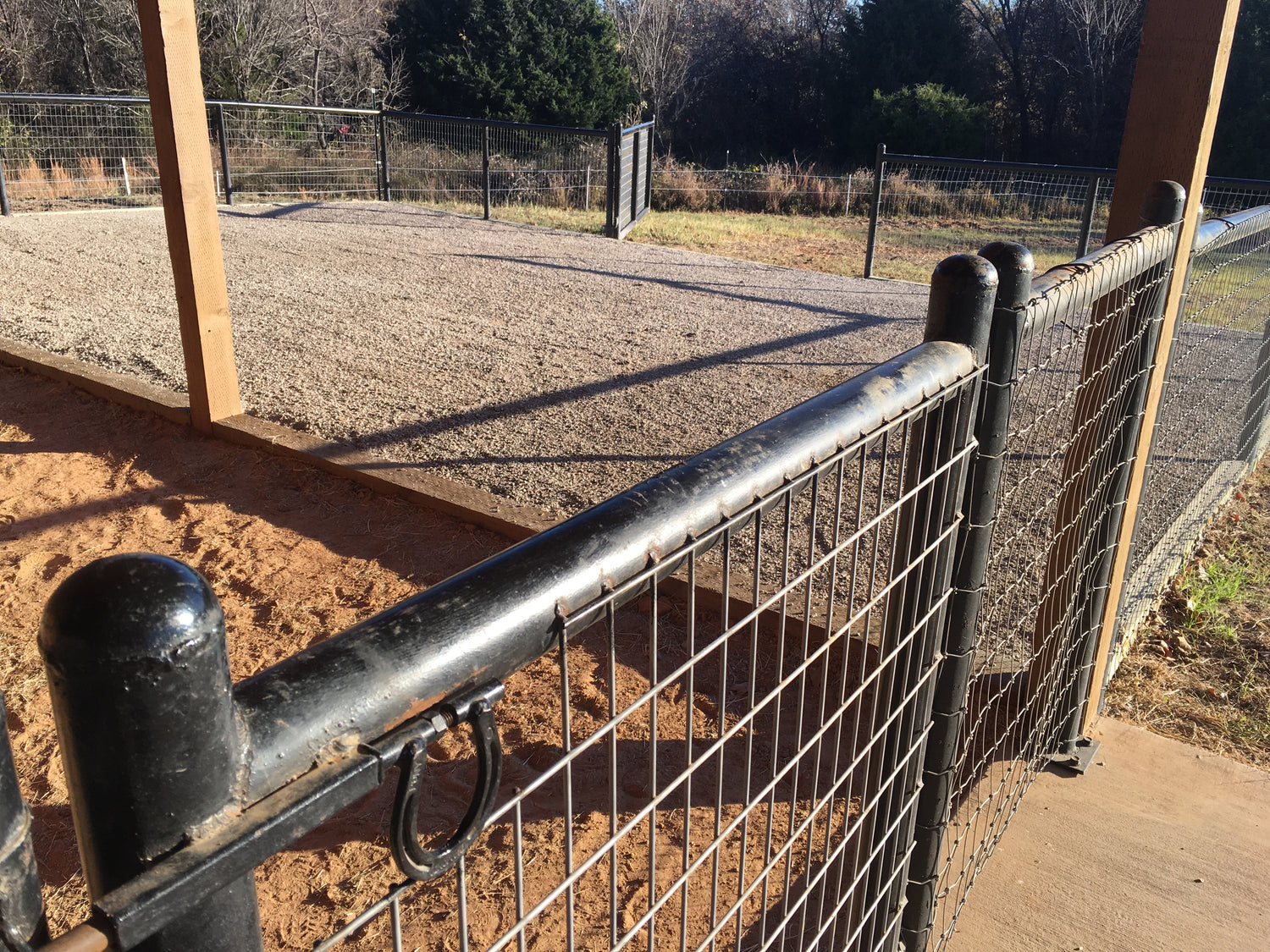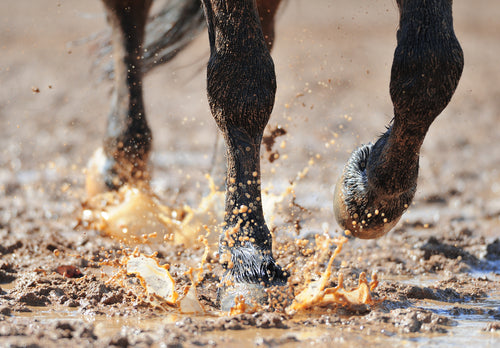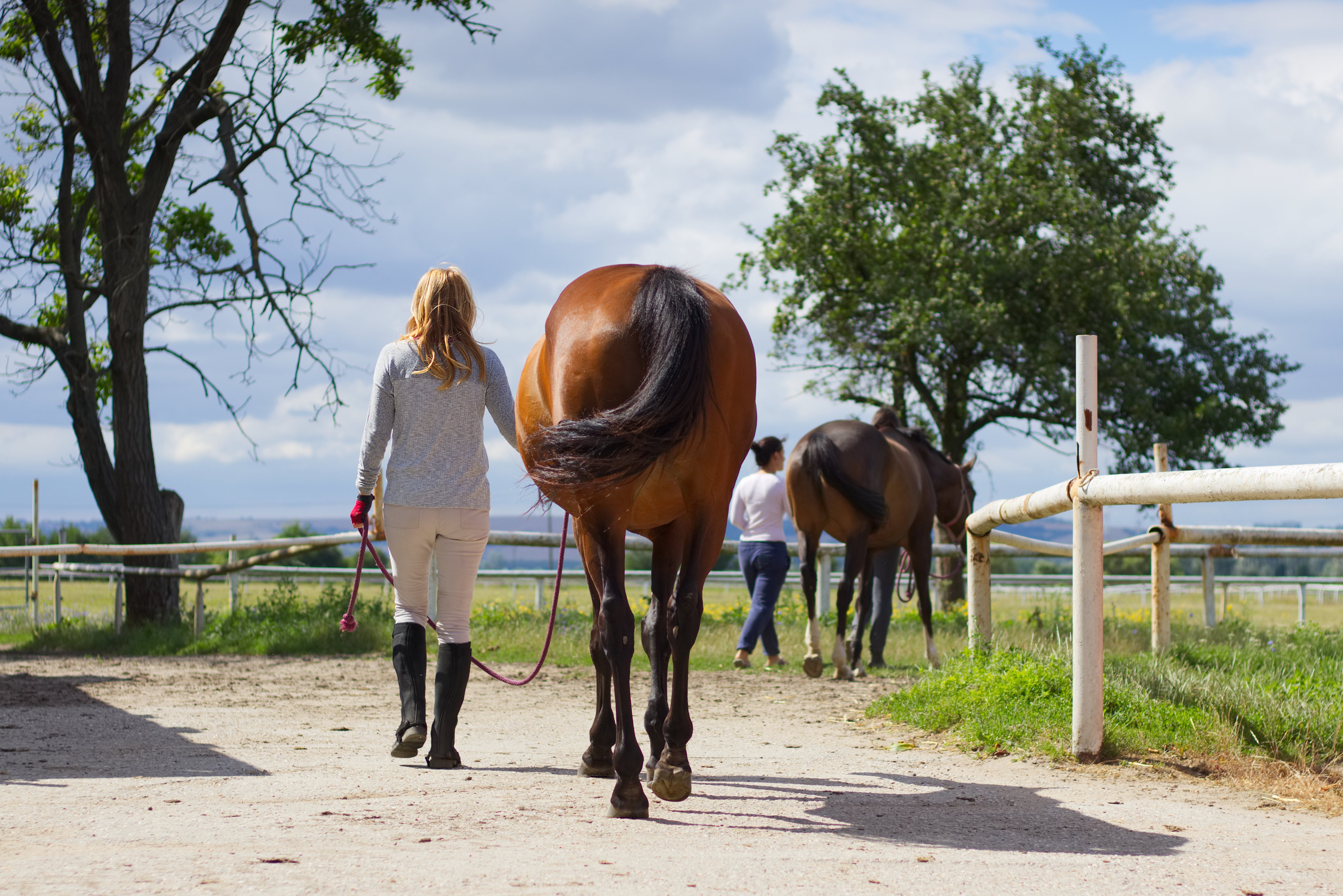Muddy pastures aren't only inconvenient, but they can negatively affect your horses' health, too. Mud can contribute to scratches, tendon and ligament strains, and poor hoof health, so it's important to focus on how to prevent muddy pastures. With a little extra effort and some planning, you can keep your pastures in good condition and prevent significant mud problems.
How to Prevent Muddy Pastures
These pasture management and mud management tips are all relatively easy to implement, and they can reduce the chance of mud forming in your pastures.
Implement Pasture Rotation
Rotating your pastures is one of the best ways to maintain pasture quality and help prevent mud from forming. As your horses graze down a pasture to the point where the grass is less than two inches high, it's important to move them into another pasture.
By moving your horses, you're giving the first pasture a chance to recover. Wait until the grass in that pasture reaches at least six inches high before putting horses back out on it. This can take about a month.
Depending on the size of your pastures and the number of horses you have, you may be able to rotate between two pastures, or you may need three or four pastures to implement an effective rotation program. Rotating your pastures prevents the grass from being grazed down too far, so the footing doesn't turn into mud.
Limit Herd Size
You can have the best pasture management plan in place, but if you're turnout out more horses than a pasture can support, you'll still end up with mud problems. The general rule of thumb is to turn out no more than one horse per acre of pasture that you have, but you may find that you need more land to keep the pasture maintained. Some horses are heavier grazers than others, and if your horses are out on the pasture 24/7, they'll be harder on the land than horses that are brought into the barn each night.
Determining the right herd size for a pasture can take a little trial and error. If you see that your horses are grazing down the area, stay ahead of the issue. You may need to reduce the herd size or rotate the horses off of the pasture so it can rest.
Install Lighthoof Panels
Sometimes, you can do everything right but still face mud in your pastures. Water runoff and drainage issues, low-lying areas, and high-traffic areas near gates and feeding spots are all likely to get at least a little muddy. Thankfully, Lighthoof panels can help you to deal with those problem areas.
By installing Lighthoof panels, you're creating a stable surface for you, your horses, and even machinery to travel over. These panels establish mud-free footing and can help solve recurrent mud issues.
Installing Lighthoof panels is as simple as stretching out these ground support panels and filling them with locally sourced gravel. There's minimal site preparation involved, and the installation creates a firm surface that's easy to maintain.
Dealing with muddy pastures is a hassle and can result in health issues for your horses. With these three tips, you can stay ahead of the mud issue and provide your horses with a safer, more enjoyable turnout area where they can safely graze, gallop, and play.




Leave a comment
This site is protected by hCaptcha and the hCaptcha Privacy Policy and Terms of Service apply.